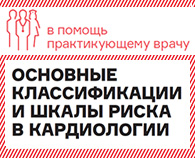Temporal relationship between infective endocarditis and stroke
Objective: Stroke frequently complicates infective endocarditis (IE). However, the temporal relationship between these diseases is uncertain.
Methods: We performed a retrospective study of adult patients hospitalized for IE between July 1, 2007, and June 30, 2011, at nonfederal acute care hospitals in California. Previously validated diagnosis codes were used to identify the primary composite outcome of ischemic or hemorrhagic stroke during discrete 1-month periods from 6 months before to 6 months after the diagnosis of IE. The odds of stroke in these periods were compared with the odds of stroke in the corresponding 1-month period 2 years earlier, which was considered the baseline risk of stroke.
Results: Among 17,926 patients with IE, 2,275 strokes occurred within the 12-month period surrounding the diagnosis of IE. The risk of stroke was highest in the month after diagnosis of IE (1,640 vs 17 strokes in the corresponding month 2 years prior). This equaled an absolute risk increase of 9.1% (95% confidence interval 8.6%–9.5%) and an odds ratio of 96.5 (95% confidence interval 60.1–166.0). Stroke risk was significantly increased beginning 4 months before the diagnosis of IE and lasting 5 months afterward. Similar temporal patterns were seen when ischemic and hemorrhagic strokes were considered separately.
Conclusions: The association between IE and stroke persists for longer than previously reported. Most diagnoses of stroke and IE are made close together in time, but a period of heightened stroke risk becomes apparent several months before the diagnosis of IE and lasts for several months afterward.
Source: www.neurology.org






